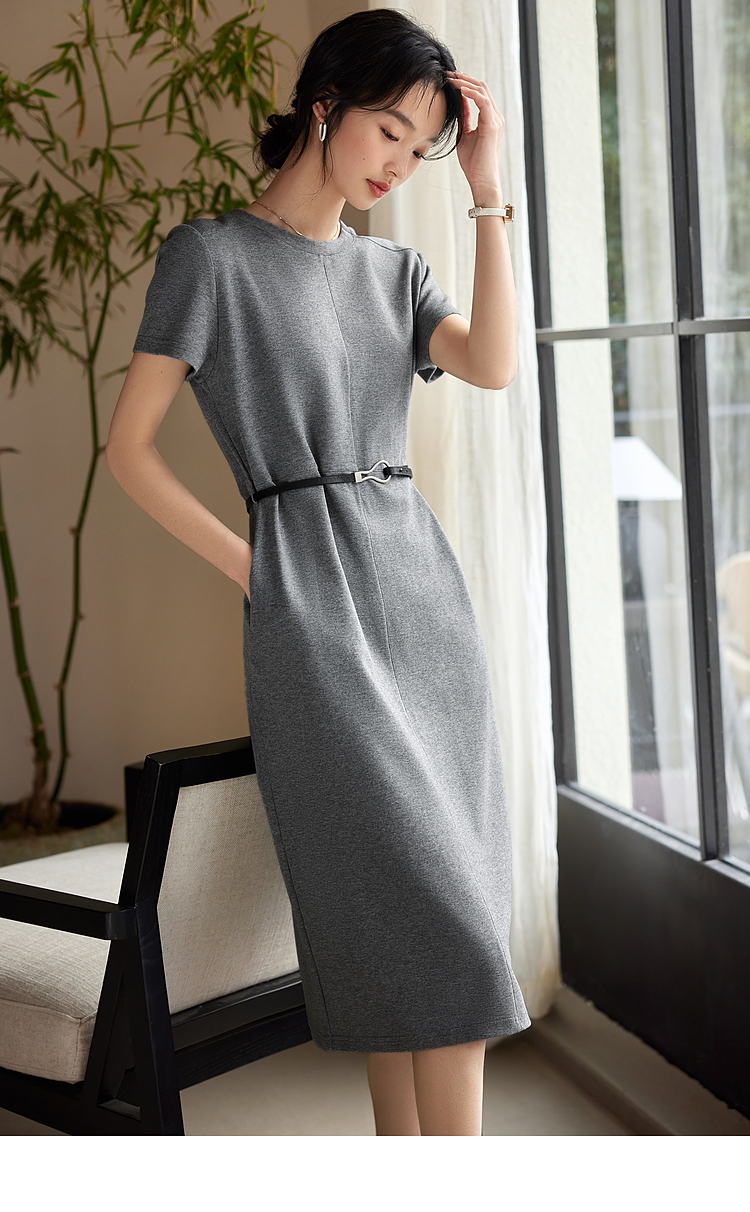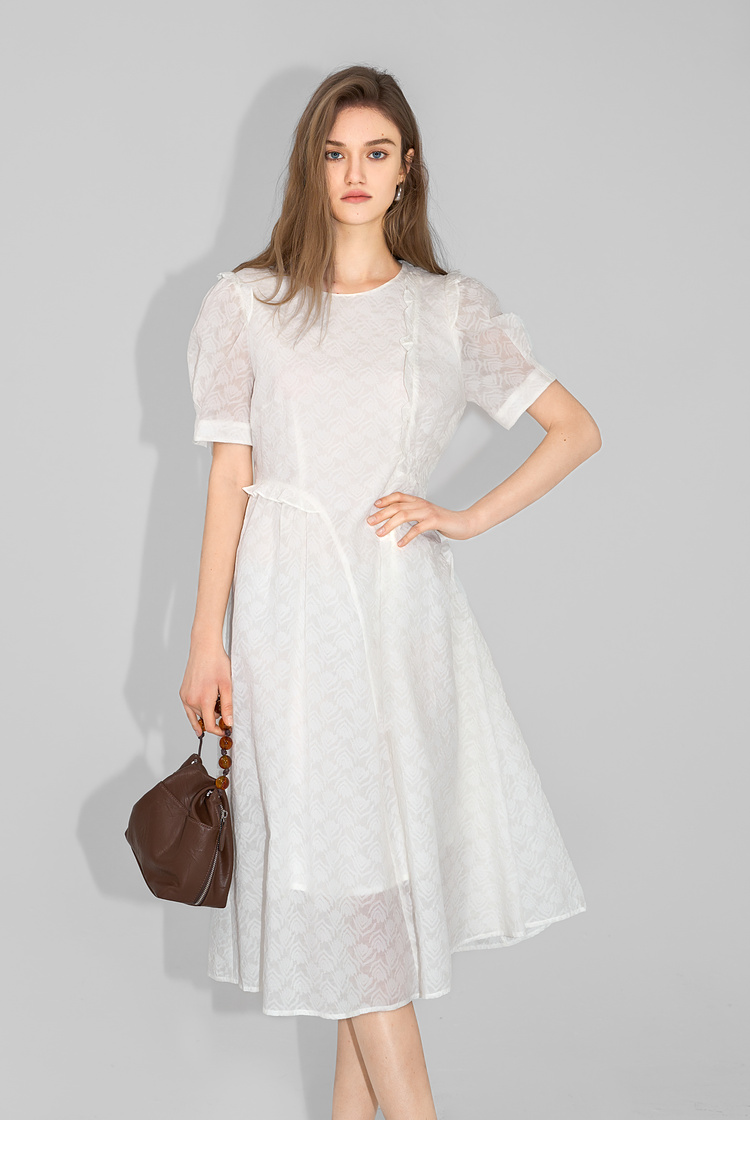A Step-by-Step Guide to Sewing the Perfect Sheath Dress Pattern
The sheath dress, a classic silhouette that flatters all body types, has been a staple in women’s fashion for decades. Its simplicity and elegance make it a versatile choice for any occasion. In this guide, we will delve into the process of creating your own sheath dress pattern, ensuring a perfect fit and a polished look.
Understanding the Sheath Dress Pattern
The sheath dress sewing pattern is a design that follows the body’s contours closely, creating a sleek and fitted appearance. It typically has a narrow skirt that hugs the body and may or may not feature a waist seam. The pattern should be chosen based on your body measurements and personal style preferences.
Choosing the Right Fabric
The choice of fabric is crucial for a sheath dress. Opt for materials with a good drape, such as jersey, silk, or a stretchy cotton blend. These fabrics will contour to your body and allow for ease of movement. Avoid heavy fabrics that may add bulk and detract from the dress’s clean lines.
Measuring and Drafting the Pattern
Begin by taking accurate measurements of your bust, waist, hips, and the length you desire for your dress. Use these measurements to draft or adjust a sheath dress sewing pattern to fit your body perfectly. There are numerous resources available online, including YouTube tutorials from certified sewing experts, that can guide you through this process.
Cutting and Sewing the Pattern
Once your pattern is ready, lay it out on your chosen fabric, ensuring it is properly aligned with the grain of the fabric. Pin the pattern pieces together and cut them out carefully. As you sew the pieces together, pay close attention to the seams, ensuring they are straight and even. The construction of a sheath dress typically involves sewing the bodice pieces first, followed by the skirt, and finally attaching the two at the waist seam.
Finishing Touches
After sewing the main body of the dress, it’s time for the finishing touches. This may include hemming the bottom of the dress, adding a zipper or other closure, and finishing any raw edges with a serger or overlock stitch. Consider adding details such as a belt or a neckline variation to make the dress uniquely yours.
Fitting and Adjusting
Once your sheath dress is sewn, try it on to check the fit. Make any necessary adjustments to ensure a comfortable and flattering silhouette. This may involve taking in the waist, adjusting the length of the sleeves, or altering the neckline. Remember, a well-fitted sheath dress should skim the body without being too tight or too loose.
Conclusion
Creating your own sheath dress sewing pattern allows you to have a garment that is tailored to your unique body shape and personal style. By following these steps, you can achieve a professional-looking dress that you will be proud to wear. Whether you’re a beginner or an experienced seamstress, the satisfaction of sewing a perfect sheath dress is unmatched.







I’m a bit concerned about the safety of sewing my own dress. The guide could do more to address safety concerns, like using sharp tools and avoiding fabric burns.
The guide is very comprehensive, but it could use more information on different sheath dress lengths. A dress that’s too short or too long can change the entire look.
The guide is very informative, but it could benefit from a section on common mistakes and how to avoid them.
I’m a stay-at-home mom, and this guide has inspired me to take up sewing again. The idea of creating a dress that fits perfectly is very appealing.
The guide is very detailed, but it could use more visuals. A few diagrams or pictures would make the instructions much clearer.
I’m a bit disappointed that the guide doesn’t mention anything about sewing machine settings. Different fabrics require different settings, and this could be a crucial detail.
The guide is very detailed, but it could use more information on different sheath dress necklines. A neckline can make or break the dress’s overall look.
I’m a bit skeptical about the claim that a sheath dress is versatile for any occasion. I think it really depends on the fabric and the design.
I’m a bit disappointed that the guide doesn’t mention anything about sewing machine settings. Different fabrics require different settings, and this could be a crucial detail.
The guide is very detailed, but it could use more information on different sheath dress necklines. A neckline can make or break the dress’s overall look.
The guide is very comprehensive, but it could use more information on different sheath dress lengths. A dress that’s too short or too long can change the entire look.
I’m a bit disappointed that the guide doesn’t mention anything about sewing machine settings. Different fabrics require different settings, and this could be a crucial detail.
I’m a bit concerned about the safety of sewing my own dress. The guide could do more to address safety concerns, like using sharp tools and avoiding fabric burns.
The guide is very well-written, but it could use more information on different sheath dress closures. A zipper is mentioned, but what about buttons or even a hidden snap closure?
I’m a bit disappointed that the guide doesn’t mention anything about sewing machine settings. Different fabrics require different settings, and this could be a crucial detail.
I’m a bit concerned about the environmental impact of sewing my own dress. The guide could do more to promote sustainable practices.
I’m a young professional, and this guide has inspired me to try sewing my own sheath dress for work. The idea of having a perfectly fitted dress is very appealing.
The guide is very comprehensive, but it could use a bit more on troubleshooting common issues like uneven seams or fabric puckering.
I’ve been sewing for years, but this guide still offered valuable insights, especially on the importance of fabric choice. The mention of jersey and silk as ideal materials for a sheath dress is spot on.
I’m a bit concerned about the safety of sewing my own dress. The guide could do more to address safety concerns, like using sharp tools and avoiding fabric burns.
The guide is very comprehensive, but it could use more information on different sheath dress lengths. A dress that’s too short or too long can change the entire look.
I’m a bit concerned about the safety of sewing my own dress. The guide could do more to address safety concerns, like using sharp tools and avoiding fabric burns.
I’m a bit disappointed that the guide doesn’t mention anything about sewing machine settings. Different fabrics require different settings, and this could be a crucial detail.
As a fashion enthusiast, I found this guide incredibly helpful for creating a sheath dress that fits like a glove. The detailed steps from choosing the right fabric to the finishing touches make it seem achievable even for a beginner like me.
The guide is very well-written, but it could use more information on different sheath dress closures. A zipper is mentioned, but what about buttons or even a hidden snap closure?